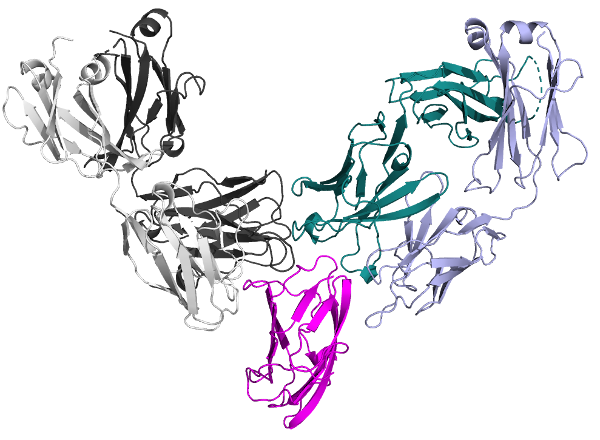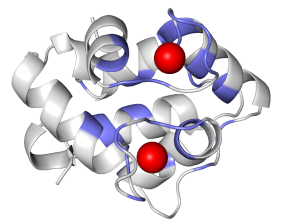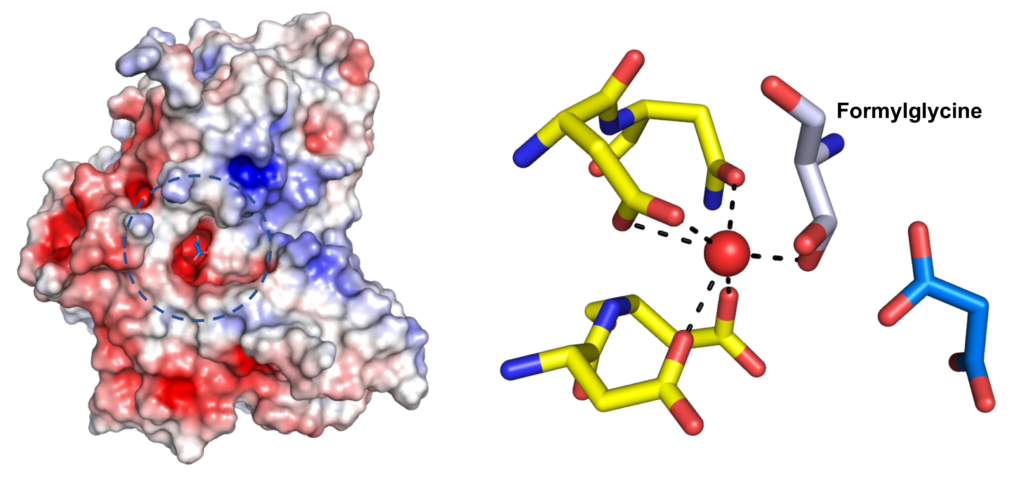2022
146. Olivry T., O’Malley A., Chruszcz M. (2022) “Evaluation of the theoretical risk of cross-reactivity among recently identified food allergens for dogs.” Veterinary Dermatology 33, 523-526. DOI: 10.1111/vde.13110
145. Khatri K., Richardson C.M., Glesner J., Kapingidza A.B., Mueller G.A., Zhang J., Dolamore C., Vailes L.D., Wünschmann S., Peebles R.S., Chapman M.D., Smith S.A, Chruszcz M., Pomés A. (2022) “Human IgE monoclonal antibody recognition of mite allergen Der p 2 defines structural basis of an epitope for IgE cross-linking and anaphylaxis in vivo.” PNAS Nexus 1, pgac054. DOI: 10.1093/pnasnexus/pgac054

144. Macnar J.M., Brzezinski D., Chruszcz M., Gront D. (2022) “Analysis of protein structures containing HEPES and MES molecules.” Protein Science 31, e4415. DOI: 10.1002/pro.4415

143. Njiru C., Xue W., De Rouck S., Alba J.M., Kant M.R., Chruszcz M., Vanholme B., Dermauw D., Wybouw N., Van Leeuwen T. (2022) “Intradiol ring cleavage dioxygenases from herbivorous spider mites as a new detoxification enzyme family in animals.” BMC Biology 20, 131. DOI: 10.1186/s12915-022-01323-1
142. Reuthers T., Nugraha R., Taki A.C., O’Malley A., Karnaneedi S., Zhang S., Kapingidza A.B., Mehr S., Kamath S.D., Chruszcz M., Mackay G., Campbell D.E., Lopata A.L. (2022) “The first reptilian allergen and major allergen for fish-allergic patients: Crocodile β-parvalbumin.” Pediatric Allergy and Immunology 33, e13781. DOI: 10.1111/pai.13781

141. Dixit S., Widemann E., Bensoussan N., Salehipourshirazi G., Bruinsma K., Milojevic M., Shukla A., Romero L.C., Zhurov V., Bernards M.A., Chruszcz M., Grbić M., Grbić V. (2022) “β-Cyanoalanine synthase protects mites against Arabidopsis defenses.” Plant Physiology 189, 1961-1975. DOI: 10.1093/plphys/kiac147
140. Daneshian L., Renggli I., Hanaway R., Offermann L.R., Schlachter C.R., Arriaza R.H., Henry S., Prakash R., Wybouw N., Dermauw W., Shimizu L.S., Van Leeuwen T., Makris T.M., Grbic V., Grbic M., Chruszcz M. (2022) “Structural and functional characterization of β-cyanoalanine synthase from Tetranychus urticae.” Insect Biochemistry and Molecular Biology 142, 103722. DOI: 10.1016/j.ibmb.2022.103722

139. Minor W., Cymborowski M., Borek D., Cooper D.R., Chruszcz M., Otwinowski Z. (2022) “Optimal structure determination from sub-optimal diffraction data.” Protein Science 31, 259-268. DOI: 10.1002/pro.4235
138. Schlachter C.R., O’Malley A., Grimes L.L., Tomashek J.J., Chruszcz M., Lee L.A. (2022) “Purification, Characterization, and Structural Studies of a Sulfatase from Pedobacter yulinensis.” Molecules 27, 87. DOI: 10.3390/molecules27010087
